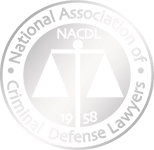The importance of understanding consent and sexual misconduct in the context of Title IX cannot be overstated. At its core, Title IX seeks to create a safe, respectful, and equitable educational setting for all students, regardless of their gender. This encompasses a thorough understanding of what constitutes sexual misconduct under Title IX, which includes a range of behaviors from sexual harassment to assault. The definitions and implications of these behaviors are crucial for both students and educators to grasp, as they form the foundation for preventing, reporting, and addressing sexual misconduct in educational settings.
Moreover, understanding the notion of consent is crucial in the context of sexual misconduct discussions and is a key aspect of Title IX’s guidelines. Clearly defining and effectively communicating what constitutes consent is essential for promoting an environment of respect and safety within educational institutions. This clarity empowers members of the academic community to make well-informed decisions, identify when violations occur, and pursue justice when needed. Title IX, therefore, operates not just as a set of legal rules but also as an educational resource, helping to guide and inform discussions about sexual ethics, individual rights, and responsibilities within academic settings.

The importance of understanding consent and sexual misconduct in the context of Title IX cannot be overstated. At its core, Title IX seeks to create a safe, respectful, and equitable educational setting for all students, regardless of their gender. This encompasses a thorough understanding of what constitutes sexual misconduct under Title IX, which includes a range of behaviors from sexual harassment to assault. The definitions and implications of these behaviors are crucial for both students and educators to grasp, as they form the foundation for preventing, reporting, and addressing sexual misconduct in educational settings.
Moreover, understanding the notion of consent is crucial in the context of sexual misconduct discussions and is a key aspect of Title IX’s guidelines. Clearly defining and effectively communicating what constitutes consent is essential for promoting an environment of respect and safety within educational institutions. This clarity empowers members of the academic community to make well-informed decisions, identify when violations occur, and pursue justice when needed. Title IX, therefore, operates not just as a set of legal rules but also as an educational resource, helping to guide and inform discussions about sexual ethics, individual rights, and responsibilities within academic settings.
Understanding Sexual Misconduct under Title IX
Title IX’s approach to addressing sexual misconduct is multifaceted and comprehensive, reflecting the serious impact these behaviors have on individuals and educational environments. A clear understanding of what constitutes sexual misconduct under Title IX is essential for students, educators, and legal professionals, including Title IX defense lawyers, who play a crucial role in these matters.
Definition and Scope of Sexual Misconduct
Sexual misconduct under Title IX encompasses a broad range of behaviors that violate the norms of respect and safety in an educational context. This includes any unwelcome behavior of a sexual nature, whether verbal, physical, or digital. It’s imperative to recognize that sexual misconduct is not limited to physical acts; it can also include harassment, exploitation, and intimidation.
Types of Behaviors Classified as Sexual Misconduct
The classification of behaviors under sexual misconduct in Title IX includes, but is not limited to:
- Sexual Harassment: Unwelcome sexual advances, requests for sexual favors, and other verbal or physical conduct of a sexual nature.
- Sexual Assault: Any non-consensual sexual act, whether it involves physical force, coercion, or incapacitation.
- Stalking: Repeated and unwanted attention, harassment, contact, or any other course of conduct directed at a specific person that causes fear.
- Dating Violence: Violence committed by a person who is or has been in a social relationship of a romantic or intimate nature with the victim.
- Domestic Violence: Violence committed by a current or former spouse or intimate partner, or by a person with whom the victim shares a child.
The Impact of Sexual Misconduct on Victims and Educational Environments
Sexual misconduct under Title IX has profound effects not only on the victims but also on the overall educational environment. For victims, the impact can range from psychological trauma and physical injuries to academic setbacks and social isolation. These effects can be long-lasting and deeply affect a person’s ability to participate fully in their education or career.
In educational settings, sexual misconduct creates an atmosphere of fear and distrust, which can impede the learning process and affect the overall campus climate. It undermines the principles of equality and respect that are foundational to academic environments. Addressing and preventing sexual misconduct is therefore not just a legal obligation under Title IX but a moral imperative to ensure the safety and well-being of all members of the educational community.

Title IX Regulations on Reporting and Adjudication
Title IX’s regulations for addressing sexual misconduct involve detailed procedures for reporting, investigating, and adjudicating such incidents. These processes are designed to ensure fairness and justice for all parties involved, including the accuser and the accused, often represented by Title IX defense lawyers. Understanding these regulations is crucial for maintaining the integrity of educational institutions and protecting the rights of all individuals.
Processes for Reporting Sexual Misconduct
- Initial Reporting: Individuals can report sexual misconduct to Title IX coordinators or other designated campus officials. Reports can be made by victims, witnesses, or third parties.
- Confidentiality and Anonymity: Title IX provides options for confidentiality and anonymous reporting, depending on the institution’s policies.
- Immediate Response: Upon receiving a report, the institution must take immediate steps to assess the situation, provide support to the complainant, and ensure the safety of the campus community.
Overview of Investigation and Adjudication Procedures under Title IX
- Formal Investigation: Once a formal complaint is filed, a thorough and impartial investigation is conducted. This may include interviews, gathering evidence, and reviewing relevant documents.
- Standard of Evidence: Title IX proceedings often use the “preponderance of the evidence” standard, meaning the incident more likely than not occurred.
- Adjudication Process: After the investigation, the case is adjudicated, which may involve a hearing with both parties presenting evidence and witnesses.
- Decision and Sanctions: A decision is made based on the evidence, and appropriate sanctions are imposed if misconduct is found.
These regulations are designed to create a process that respects the rights of all parties involved while addressing incidents of sexual misconduct effectively and justly. They underscore the importance of a fair and transparent approach in handling sensitive and impactful cases within educational settings.

Recent Changes and Challenges
Title IX, a fundamental law in combating sexual misconduct within educational contexts, has experienced numerous important modifications and encountered various challenges recently. The alterations made to this law have substantially influenced the way issues related to consent and sexual misconduct are managed under its guidelines.
Discussion of Recent Amendments to Title IX
Regulatory Amendments: Recent years have seen regulatory changes to Title IX, particularly in how sexual misconduct cases are handled. These changes often involve the process of reporting, investigation, and adjudication, aiming to balance the rights of the accuser and the accused.
Expanding Definitions: There has been an ongoing effort to expand and clarify the definitions of consent and sexual misconduct. This includes a broader understanding of what constitutes sexual harassment and assault, and how consent is recognized and established.
Policy Shifts: Changes in the political landscape often bring shifts in Title IX policies, reflecting differing approaches to handling sexual misconduct in educational institutions.
Impact of These Changes on Consent and Misconduct
Clarification of Consent: The amendments have sought to provide clearer guidelines on what constitutes consent, making it easier for students and educators to understand and apply these standards.
Handling of Sexual Misconduct Cases: Changes in Title IX regulations have impacted how institutions handle sexual misconduct cases, from the initial report to the final adjudication. This includes modifications to the rights of those involved and the procedures for investigating and resolving cases.
Institutional Policies and Training: These amendments have led to changes in institutional policies and increased emphasis on training for staff and students. There’s a greater focus on preventive education to address consent and sexual misconduct proactively.
Challenges Faced
Legal and Political Challenges: Title IX amendments often face legal challenges, which can lead to changes in how they are implemented. Additionally, political views on Title IX’s scope and application lead to debates and potential shifts in policy.
Adaptation by Institutions: Educational institutions sometimes struggle to adapt to the frequent changes in Title IX regulations, which can lead to inconsistencies in how cases of sexual misconduct are handled.
Awareness and Compliance: Ensuring that all members of an educational community are aware of and comply with the latest Title IX regulations remains a significant challenge.
The latest revisions to Title IX are notable and intricate, altering the way consent and sexual misconduct are conceptualized and handled in academic institutions. These updates and the challenges they present underscore the dynamic character of Title IX and the continuous endeavor to tackle sexual misconduct effectively within educational contexts.
Conclusion
Understanding and adhering to Title IX regulations, especially in the context of sexual misconduct, is more than a legal requirement; it’s a fundamental aspect of ensuring safety and equity in educational environments. The complexities and nuances of Title IX, from the perspective of both the accuser and the accused, underscore the need for specialized expertise, often necessitated by the involvement of Title IX defense lawyers. These professionals play a crucial role in navigating the legal landscape, ensuring that the rights of all parties are upheld.
The evolving nature of Title IX, with its recent amendments and ongoing challenges, highlights the importance of continuous education and awareness. Educational institutions, legal professionals, students, and staff must stay informed about the current regulations and best practices for handling issues of consent and sexual misconduct. This is not only a legal imperative but also a moral one, fostering a culture of respect and dignity.
As we move forward, there is a clear call to action for all stakeholders involved in the educational sector. It is essential to engage in ongoing education, training, and dialogue about Title IX and its implications. This commitment to understanding and adhering to Title IX regulations is crucial for creating and maintaining safe, inclusive, and equitable learning environments where every individual’s rights are protected and respected. The path towards a more informed and respectful educational landscape is continuous, and it is one that we must all undertake collectively.











